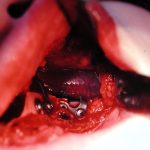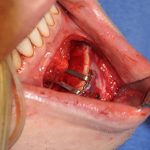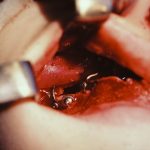Facial skeletal imbalances present in many manifestations. Most commonly these are perceived from the profile view as maxillary and mandibular discrepancies in the mid- to lower face. Often they are reflected as changes in one’s occlusion when the bone deficiencies become significant enough. In these cases, orthognathic surgery is used for facial skeletal correction. Despite this surgery, all areas of facial bony deficiencies may not be aesthetically improved.
Facial osteotomies only change certain bony prominences and aesthetic facial highlights. It is important in orthognathic surgery, therefore, to recognize what will or will not be changed by maxilla-mandibular repositioning. A perfect occlusion is great but an opportunity to add to an improvement in one’s facial appearance can be missed if not diagnosed and treatment planned.

Mandibular osteotomies do a great job of changing horizontal position but no changes ever happen in width. This can leave the jaw angles deficient which often occurs after a sagittal split mandibular osteotomy. Implants can dramatically change the shape and width of the jaw angle but should not be used at the time of an osteotomy due to increased risks of infection and impairment of bony healing. They may be desired later, particularly if some bony resorption of the jaw angle has occurred which is not rare. 
For those patients who have residual facial bone deficiencies after orthognathic surgery or have bony deficiencies recognized as part of orthognathic surgery treatment planning, facial implants offer a viable option. The variety in size and shape of facial implants, whether off-the-shelf or from custom designs, today offers numerous safe and effective treatments as an adjunct to orthognathic surgery to create the visual illusion of actual bony movements.
Dr. Barry Eppley
Indianapolis, Indiana



